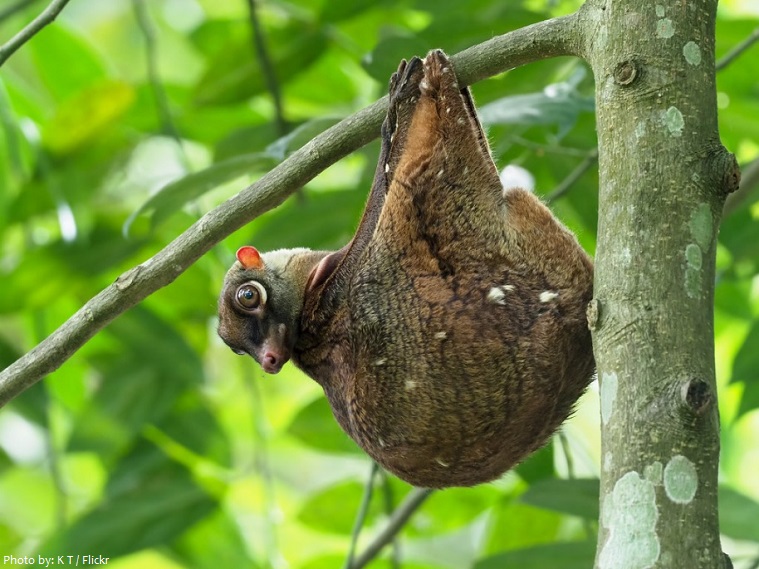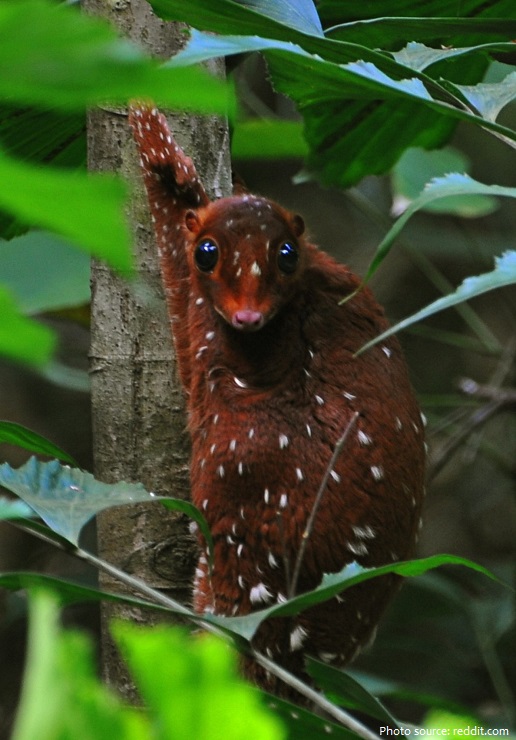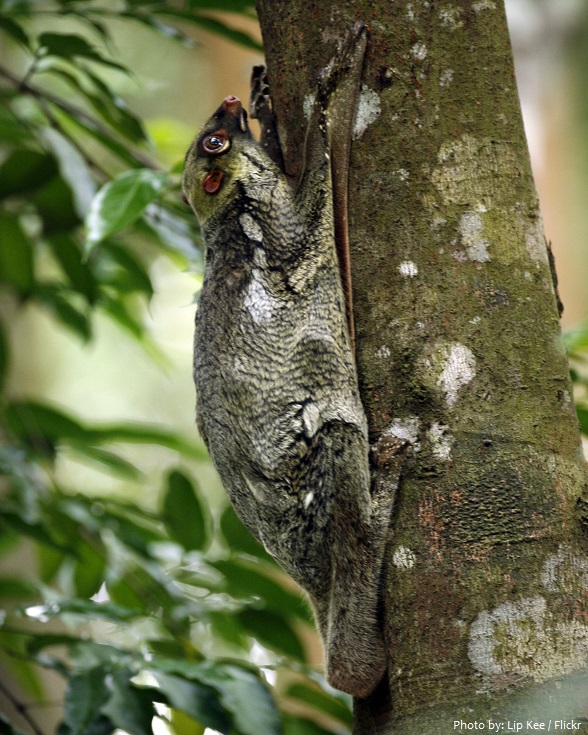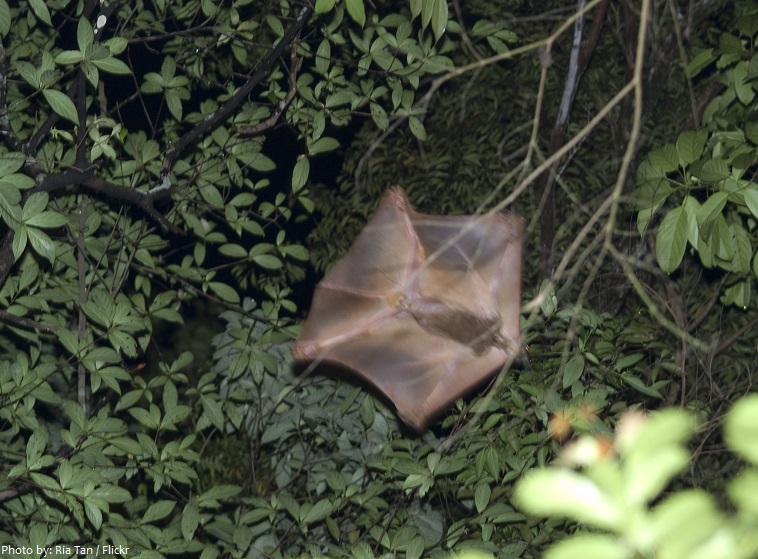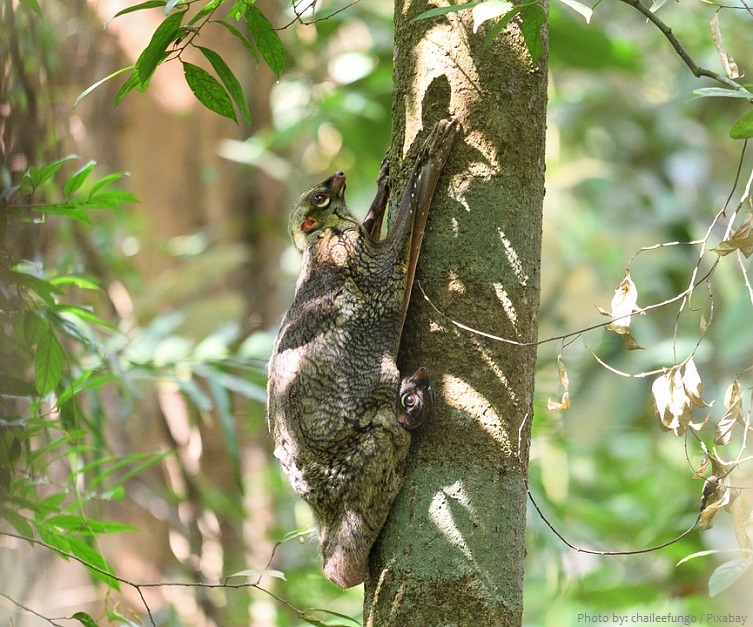Colugos are strange, medium-sized animals.
They are also called “flying lemurs“, because of their habit of gliding and the fact that their faces are lemur-like; however, they are not lemurs (all lemurs are in Madagascar).
An evolutionary study shows that colugos are the closest living relative of primates.
Colugos are found only in Southeast Asia and on some of the Philippine Islands.
They are solitary animals that live in the tropical forests.
There are only two extant species known:
• the Philippine flying lemur (Cynocephalus volans)
• the Sunda flying lemur (Galeopterus variegatus)
Colugos reach lengths of 35 to 40 cm (14 to 16 in) and weigh 1 to 2 kg (2.2 to 4.4 lb).
They have long, slender front and rear limbs, a medium-length tail, and a relatively light build. The head is small, with large, front-focused eyes for excellent binocular vision, and small rounded ears.
Colugos resemble large flying squirrels, as they are arboreal climbers and gliders that have webbed feet with claws.
The long limbs and the tail are connected by broad folds of skin, as in bats.
The limbs are outstretched when the animal leaps from high in the trees, and its controlled glide can cover over 70 meters (230 feet) while losing little altitude. They are the most capable gliders of all gliding mammals.
Colugos are nocturnal, passing the day in dens in hollow trees or suspended from branches.
At night, colugos spend most of their time up in the trees foraging, with gliding being used to either find another foraging tree or to find possible mates and protect territory.
Colugos are herbivorous, feeding on fruit, young leaves, and flowers. They scrape green material from the surface of leaves with their lower incisors, using their tongue, which is very large, and incisors to pick the leaves.
They hang upside down while feeding and travelling along branches.
Colugos are surprisingly clumsy climbers. Lacking opposable thumbs and not being especially strong, they proceed upwards in a series of slow hops, gripping onto the bark of trees with their small, sharp claws.
Little is known about the reproductive behavior in colugos. The young are born after just 60 days of gestation in a tiny and undeveloped form, and spend their first six months or so of life clinging to the mother’s belly. To protect them and transport them she curls her tail up to fold the gliding membrane into a warm, secure quasi-pouch. Breeding is fairly slow as the young do not reach full size until they are two or three years old.
Colugos provide ecological functions in terms of seed dispersal and as food for predators. In particular, the Philippine flying lemur is a very important prey animal for the endangered Philippine eagle, accounting for a large part of its diet.
Both species are listed as Least Concern on the IUCN list. But both species are threatened by habitat destruction.
Because of its varying characteristics, colugos have been classified in their own order, the order Dermoptera.
